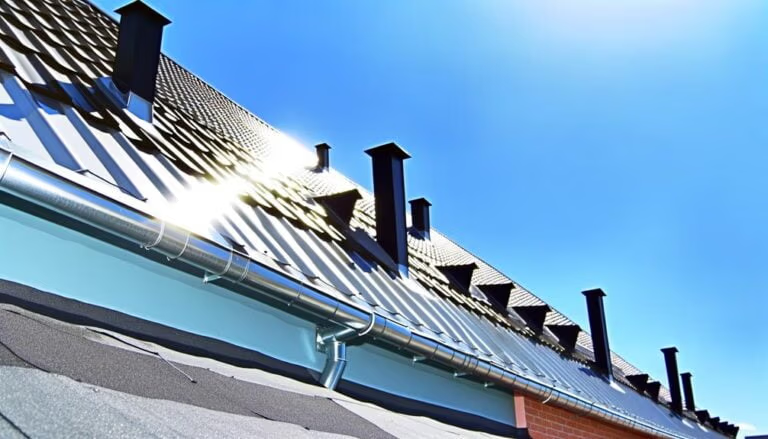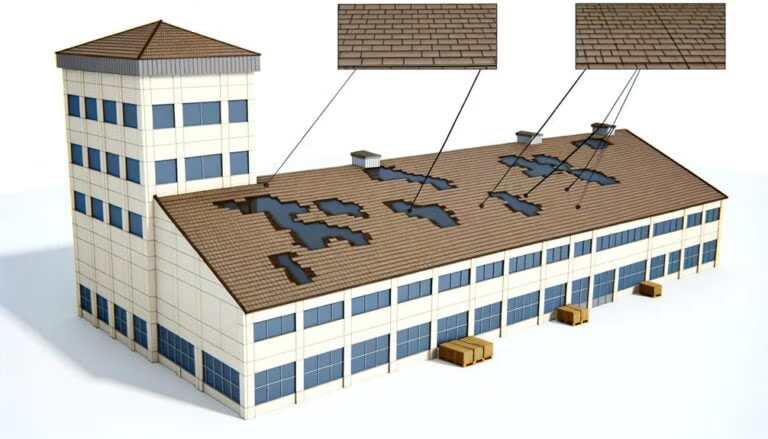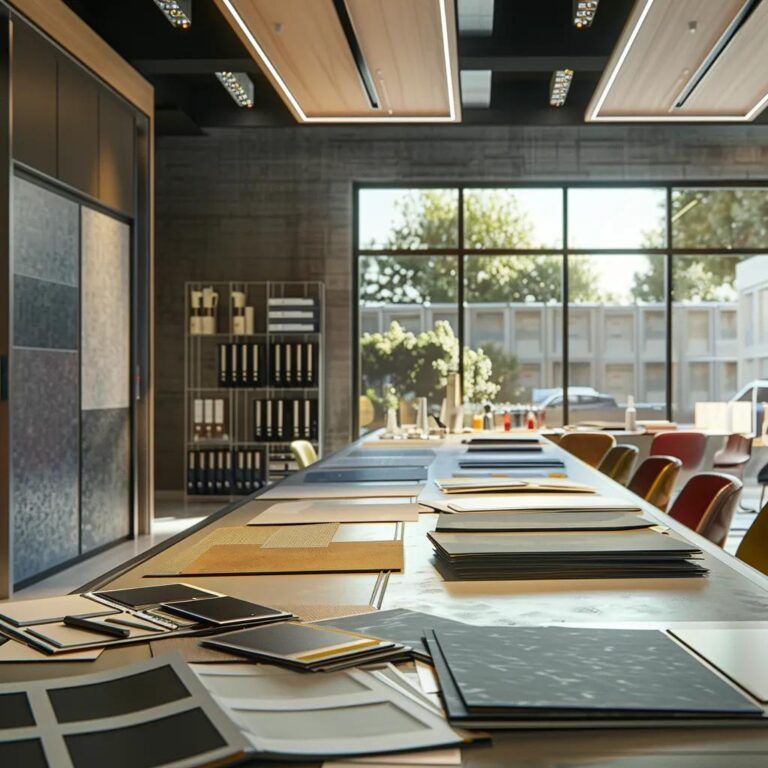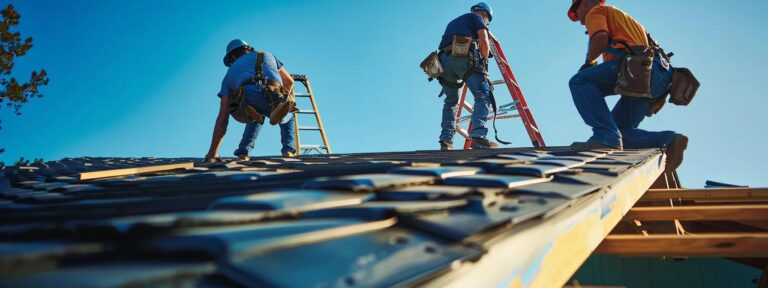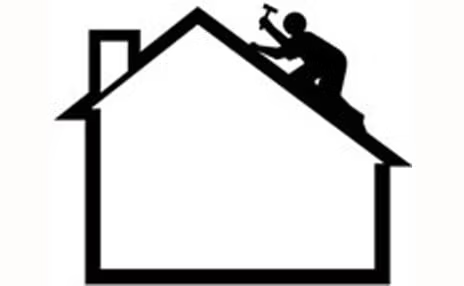Table Of Contents:
- Essential Tips for Long-Lasting Commercial Flat Roofs
- 15 Essential Tips for Maintaining Long-Lasting Commercial Flat Roofs
- Selecting the Best Materials for Commercial Flat Roofs
- Related Resources for Commercial Flat Roof Maintenance
- Conclusion
Essential Tips for Long-Lasting Commercial Flat Roofs
Is your commercial flat roof showing signs of wear and tear? Many property owners overlook the importance of regular maintenance, leading to costly repairs or even complete roof replacements. In this post, I will share 15 essential tips for maintaining long-lasting commercial flat roofs, covering topics such as selecting the best materials and the critical role of commercial roof inspections. By following these guidelines, you can prevent issues like algae growth and damage caused by freezing temperatures, ensuring your roofing remains functional and effective for years to come.
15 Essential Tips for Maintaining Long-Lasting Commercial Flat Roofs
Regular inspections are crucial for detecting roof damage, while keeping the roof clean prevents wear from debris. Managing ponding water effectively and promptly addressing leaks are essential to long-term sustainability. I also recommend scheduling professional maintenance and applying protective coatings. Snow removal, documenting maintenance, and trimming vegetation contribute to a comprehensive approach to rooflongevity.
Ensuring UV protection, implementing safety protocols, enhancing energyefficiency, preparing for extreme weather, and budgeting for ongoing maintenance are all key strategies that I consistently apply. Each of these tips plays a vital role in maintaining the integrity of your commercial flat roof.
1. Conduct Regular Inspections to Identify Issues
Conducting regular inspections is fundamental in maintaining the durability of commercial flat roofs, particularly here in Southern California where we face unique weather conditions. I recommend performing these checks at least twice a year, or more frequently after major storms. This proactive measure helps to identify potential issues like mold growth or hidden leaks before they escalate into costly repairs.
During inspections, I focus on areas susceptible to damage, such as flashings, drains, and seams. Look for signs of wear that can lead to ice dams or water pooling, especially after heavy rain. These inspections not only protect your investment but also improve energyefficiency by ensuring that the roofing system performs optimally, thus extending its lifespan significantly.
2. Keep the Roof Clean and Free of Debris
Keeping your flat roof clean is vital for its longevity and performance. Regularly removing debris, such as leaves and branches, helps prevent moisture accumulation that can compromise waterproofing. Additionally, I suggest inspecting flashings and metal components during cleaning, ensuring they are secure and free of rust, which can lead to leaks if not addressed.
Applying a high-quality roofcoating, such as silicone, not only enhances the surface but also provides extra protection against environmental factors. When scheduling roof maintenance, I emphasize the importance of these cleaning practices, as they contribute significantly to preventing damage and extending the life of the roof. Consistency in maintenance is key:
| Maintenance Task | Frequency | Benefit |
|---|---|---|
| Remove Debris | Monthly | Prevents water pooling |
| Inspect Flashings | Every 6 months | Identifies leaks early |
| Clean Roof Coatings | Annually | Extends protection and lifespan |
3. Manage Ponding Water Effectively
Managing ponding water is crucial for maintaining the integrity of a commercial roof. Accumulated water can create pressure points that lead to leaks and structural damage over time. I typically recommend installing proper drainage systems, such as scuppers and drains, to ensure effective water removal. Additionally, regularly inspecting and cleaning these drainage points helps to prevent blockages caused by debris or vegetation, which can exacerbate ponding issues.
In my experience, addressing ponding water swiftly can prevent the formation of a dam effect, where water collects in low areas. This ensures that potential damage is mitigated before it escalates. Implementing protective measures, like sloping areas of the metal roof towards drainage points, can enhance water management and prolong the life of the roofing system. Timely intervention and proper maintenance are key strategies to keep commercial roofs performing optimally for years to come.
4. Inspect and Repair Flashings Promptly
As a roofer, I understand the importance of inspecting and repairing flashings promptly, especially on flat roofs where these elements are vital for preventing leaks. Flashings, which direct water away from seams and joints, can be particularly vulnerable to damage during winter storms. I recommend checking them regularly to ensure they remain secure and function effectively, as even minor wear can lead to significant issues if not addressed in time.
During my inspections, I pay close attention to the flashings around the deck and any penetrations, such as vents and pipes. If you notice signs of deterioration, such as rust or cracks, it’s essential to address these problems quickly to maintain the integrity of your flat roof. Timely repairs not only protect your property from potential water damage but also extend the overall lifespan of the roofing system, ensuring your investment remains sound for years to come.
5. Schedule Professional Roof Maintenance
Scheduling professional roof maintenance is an indispensable part of preserving the longevity of your flat commercial roof. I regularly remind my clients that while DIY inspections can be useful, nothing compares to the expertise provided by trained professionals. They can identify issues like moss growth, which can trap moisture and lead to more significant damage if left untreated. Professional roofers also have the experience to address components like the polyvinyl chloridemembrane, ensuring that all aspects of your roofing system are in optimal condition.
Regular professional maintenance also prepares your roof for seasonal challenges, such as flat roofsnow accumulation. Heavy snow can put excessive strain on the roof structure, and without timely interventions, this can lead to costly repairs. By establishing a maintenance schedule, I help clients mitigate risks and extend the service life of their roofing systems significantly. To summarize the essentials of maintaining your commercial flat roof, consider the following tips:
- Conduct regular inspections to identify potential issues early.
- Keep the roof clean and free of debris.
- Manage ponding water effectively.
- Inspect and repair flashings promptly.
- Schedule professional roof maintenance regularly.
6. Apply Roof Coatings for Added Protection
Applying roof coatings is an effective strategy to extend the life of commercial flat roofs. These coatings, often made from materials like silicone or bitumen, create a waterproof barrier that protects against moisture and UV damage. As a roofing company, we emphasize their importance in enhancing drainage and providing additional protection against wind and other environmental stressors that can lead to degradation over time.
In my experience, investing in quality roofing services and regular application of these coatings can significantly reduce maintenance costs. It is essential to work with skilled professionals who understand the unique needs of your roof, ensuring that coatings are applied correctly for optimal performance. This proactive approach ensures that your flat roof remains resilient against contaminants and extends its operational lifespan.
| Coating Type | Benefits | Recommended Frequency |
|---|---|---|
| Silicone | Reflects UV rays, reduces energy costs | Every 5 years |
| Bitumen | Enhanced waterproofing, durable | Every 5-10 years |
| Polyurethane | Excellent abrasion resistance | Every 5 years |
7. Remediate Roof Leaks as Soon as Possible
Remediating roofleaks as soon as they are detected is critical for the longevity of commercial flat roofs. In my experience, even a small leak can escalate quickly, especially during periods of extreme weather or heavy snow. I recommend checking areas near downspouts and around construction joints, as these are common points of vulnerability. Quick action not only prevents further damage to roofing materials but also protects the underlying structure from potential water intrusion.
Incorporating preventative measures, such as applying a high-quality roofcoating, can help mitigate leaks and enhance the roof‘s resistance to moisture. I encourage clients to monitor their roofs regularly, particularly after heavy rainfall or snowstorms, to ensure that any new leaks are addressed immediately. Taking these proactive steps will safeguard your investment and extend the lifespan of your roofing system, making a noticeable difference in your overall maintenance costs over time.
8. Safely Remove Snow and Ice Accumulation
Safely removing snow and ice accumulation is critical for the integrity of commercial flat roofing systems. Excess weight from snow can create a significant hazard by putting stress on the roof structure, which may lead to leaks or even structural failure. I always advise clients to clear heavy snow promptly, ensuring that the process is performed by professionals equipped with the right tools to minimize any potential damage to the roofing materials.
Moreover, I emphasize the importance of maintaining efficiency during snow removal. By focusing on targeted areas, such as roof edges and drains, we can prevent water ponding when the snow melts. Additionally, keeping the roof free from leaves and debris not only enhances drainage but also increases the roof‘s resistance to ultraviolet damage over time, ensuring that the roofing system remains robust and functional.
| Snow Removal Task | Frequency | Benefits |
|---|---|---|
| Clear Heavy Snow | After heavy snowfall | Prevents structural hazard |
| Inspect Drains | After snow melts | Enhances water efficiency |
| Remove Debris | Monthly | Increases UV resistance |
9. Document Maintenance Activities and Changes
Documenting maintenance activities and changes for a commercial flat roof is a simple yet vital practice to ensure longevity. By keeping detailed records of inspections, repairs, and the application of sealants, I can easily track the roof‘s condition over time. This documentation helps me identify patterns and recognize when components like membranes may need replacement or additional care, ultimately contributing to the roof’s durability.
Moreover, having an organized log of maintenance activities allows me to make informed decisions regarding proactive measures. For instance, if frequent leaks are noted in specific areas, it may indicate that those sections require more attention or a different type of sealant to strengthen their resistance to water. This structured approach not only enhances the roof‘s performance but also prevents unforeseen expenses related to extensive repairs.
- Conduct regular inspections to identify potential issues early.
- Keep the roof clean and free of debris.
- Manage ponding water effectively.
- Inspect and repair flashings promptly.
- Schedule professional roof maintenance regularly.
- Apply roof coatings for added protection.
- Remediate roofleaks as soon as possible.
- Safely remove snow and ice accumulation.
- Document maintenance activities and changes.
10. Trim Surrounding Trees and Vegetation
Trimming surrounding trees and vegetation is a significant aspect of commercial roof maintenance. Overhanging branches can add unnecessary weight to the roof and may contribute to issues like blistering if debris collects and traps moisture. By keeping trees trimmed, I can help minimize the risk of roof repairs caused by physical stress or water damage.
In my experience, ensuring that vegetation is well-maintained reduces the chances of leaves and branches accumulating on the roof, which can hinder drainage and promote mold growth. Moreover, a clear space around the roof allows for better sunlight exposure, aiding in the drying process after rain or snow. Taking these preventive measures helps extend the lifespan of your commercial flat roof and maintain its integrity effectively:
| Maintenance Task | Frequency | Benefits |
|---|---|---|
| Trim Trees | Annually | Reduces weight and risk of damage |
| Clear Roof Debris | Monthly | Improves drainage and prevents moisture issues |
| Inspect Vegetation Impact | Every 6 months | Maintains overall roof health |
11. Ensure UV Protection With Reflective Materials
Ensuring UV protection with reflective materials is essential for maintaining the integrity of commercial flat roofs. As a roofing professional, I’ve seen the damage that severe weather and intense sunlight can do over time. By using reflective coatings or membranes, I help minimize heat absorption, reducing the risk of leaks and prolonging the lifespan of the roofing system. This proactive measure is especially important in climates where sun exposure is significant, as it enhances energyefficiency and protects the underlying materials from degradation.
When working with a commercial roofing contractor, I emphasize the importance of selecting UV-reflective materials that are suitable for each specific property. These materials act as a barrier against harmful UV rays and help maintain cooler roof temperatures, which ultimately contributes to lower energy costs. Implementing these strategies not only safeguards the roof against potential leaks but also ensures that businesses can effectively manage their roofing investments for the long haul.
12. Implement Safety Protocols for Roof Access
Implementing safety protocols for roof access is crucial in protecting both personnel and the roofing system during roof inspections. I always ensure that clear guidelines are in place before accessing a rooftop, such as checking for debris or potential hazards like a skylight or ponding water. These precautions not only prevent accidents but also allow for a thorough inspection, helping to identify any issues early on, especially on surfaces made of thermoplastic materials.
In my practice, I make it a point to provide training for all team members regarding safety equipment like harnesses and ladders. Regular assessments of access points also play a vital role in maintaining safety standards. Establishing these protocols creates a secure environment, enabling efficient inspections and maintenance while minimizing risks associated with rooftop work:
- Ensure clear safety guidelines for roof access.
- Check for debris, skylights, and ponding water.
- Provide training for safety equipment usage.
- Regularly assess access points for potential hazards.
13. Enhance Energy Efficiency With Proper Insulation
Enhancing energyefficiency with proper insulation is a critical element in maintaining the longevity of commercial flat roofs. I often recommend using high-quality polyurethane insulation, which provides excellent resistance to moisture and thermal variations. This type of insulation not only helps prevent heat loss but also minimizes the risk of wood rot, a common issue for roofs lacking adequate insulation.
In my experience, investing in proper insulation leads to significant savings on energy costs over time. By preventing fluctuations in temperature, it reduces the strain on HVAC systems, making them operate more efficiently. When I conduct flat roof bubble repairs, I always assess the insulation needs as part of the process to ensure the entire roofing system remains effective and sturdy, addressing any potential weaknesses that could lead to future roof repair needs.
14. Prepare for Extreme Weather Maintenance Needs
Preparing for extreme weather conditions is essential for maintaining the longevity of commercial flat roofs, particularly in areas that experience significant wear and tear from hail or heavy snowfall. I always suggest that building owners evaluate their roof’s materials, like thermoplastic olefin, to ensure they can withstand harsh elements. Having a proactive maintenance plan that includes timely snow removal is critical to prevent undue stress on the roofing structure and mitigate potential warranty issues related to damage caused by severe weather.
Moreover, I emphasize the importance of conducting pre-storm inspections to identify any vulnerable areas that may need additional reinforcement. Ensuring that flashings, seams, and drainage systems are functioning properly can significantly reduce the risk of leaks or structural damage during extreme weather events. By addressing these elements ahead of time, I believe we can safeguard the roof‘s integrity and help clients avoid costly repairs or disruptions to their operations.
15. Budget for Ongoing Roof Maintenance Needs
Budgeting for ongoing roof maintenance needs is crucial for the longevity of commercial flat roofs. I encourage clients to set aside funds specifically for routine upkeep and inspections, which helps prevent costly water damage caused by unforeseen issues like infiltration or leaks. Having a financial plan also allows for timely repairs or application of foamroofing materials, ensuring that minor problems don’t escalate into major expenses.
Regular investment in maintenance not only safeguards the structure but can also contribute to operational efficiency by reducing the likelihood of unexpected repair costs. I always remind clients to seek a free estimate for potential repairs to stay informed about the condition of their roofs. This practice not only helps manage expenses but also ensures that your roofing system remains effective and durable throughout its lifespan.
Selecting the Best Materials for Commercial Flat Roofs
When considering materials for commercial flat roofs, I often recommend thermoplastic olefin (TPO) and polyvinyl chloride (PVC) due to their durability and energyefficiency. Both options provide excellent resistance to weathering, making them suitable for our diverse climate challenges.
Another strong contender is modified bitumen, which offers flexibility and robustness. It can adapt to temperature fluctuations, preventing cracks and leaks, thereby enhancing longevity.
As I evaluate materials, I pay close attention to the reflective properties, especially for flat roofs in sunny locations. Materials that reflect UV rays help in reducing heat absorption, ultimately lowering energy costs while extending the roof‘s lifespan.
Choosing high-quality materials is essential to ensuring the integrity and efficiency of your roof system:
| Material Type | Benefits | Longevity |
|---|---|---|
| TPO | Energy efficient, UV resistant | 15-20 years |
| PVC | Durable, weather resistant | 20+ years |
| Modified Bitumen | Flexible, excellent thermal properties | 10-20 years |
Related Resources for Commercial Flat Roof Maintenance
To maintain a long-lasting commercial flat roof, understanding best practices for routine maintenance is essential. I will also discuss different flat roof material options that can enhance durability and performance. Additionally, we’ll emphasize the importance of professional roof inspections in identifying issues early. These insights will provide you with the knowledge needed to safeguard your roofing investment effectively.
Best Practices for Routine Roof Maintenance
Implementing best practices for routine roof maintenance is essential for the longevity of commercial flat roofs. From my experience, establishing a regular schedule for inspections and cleaning can help identify emerging problems before they escalate. For instance, I recommend checking for debris accumulation and ensuring drainage systems are clear at least every six months to prevent water pooling and potential leaks.
Additionally, it’s helpful to maintain a record of all maintenance activities. This documentation enables me to pinpoint patterns in roof performance and determine when specific areas may require more attention. Consistent upkeep, such as reinforcements of flashings and timely application of protective coatings, plays a significant role in safeguarding against weather-related damage and extending the lifespan of your roofing investment:
- Conduct regular inspections to spot potential issues.
- Keep drainage systems and gutters clear of debris.
- Document all maintenance activities for future reference.
- Reinforce flashings to prevent leaks.
- Apply protective coatings as needed to enhance durability.
Understanding Different Flat Roof Material Options
When selecting a material for commercial flat roofs, I often recommend thermoplastic olefin (TPO) and polyvinyl chloride (PVC) due to their durability and energyefficiency. Both types are resistant to weathering, making them ideal for varying climates while also providing excellent performance in terms of insulation and energy savings.
Moreover, modified bitumen is another great option that I frequently suggest for its flexibility and robust characteristics. This material adapts well to temperature fluctuations, which can help prevent cracks and leaks, ultimately extending the life of your roof. It’s essential to consider your specific location and needs when making a choice, as the right material can significantly impact maintenance efforts and costs over time:
- Thermoplastic Olefin (TPO): Energy-efficient and UV resistant.
- Polyvinyl Chloride (PVC): Durable and weather resistant.
- Modified Bitumen: Flexible with excellent thermal properties.
The Importance of Professional Roof Inspections
Professional roof inspections are critical because they provide an expert assessment of your commercial flat roof‘s condition. I often find that trained professionals can identify hidden issues, such as small leaks or weakened flashings, which might go unnoticed during regular maintenance. Addressing these concerns early can prevent extensive damage and save significant costs in the long run.
Moreover, my experience shows that scheduling routine professional inspections ensures that all components of a commercial flat roof work optimally. Roofers can also offer insights regarding material performance and potential upgrades tailored to your specific roofing system. Establishing a proactive maintenance plan includes updates from these inspections, which is essential for extending the roof‘s lifespan and avoiding unexpected expenditures:
- Identify hidden issues before they escalate.
- Gain expert insights on roof performance and materials.
- Implement a proactive maintenance plan.
Essential Tips for Commercial Flat Roofs
Maintaining commercial flat roofs is critical for ensuring their longevity and performance. Regular inspections, effective debris removal, and prompt leak repairs are essential actions that protect your investment. Implementing professional maintenance and applying protective coatings significantly enhance roof durability and efficiency. By following these essential tips, you can safeguard your roofing system, reduce long-term costs, and ensure optimal performance throughout its lifespan.

